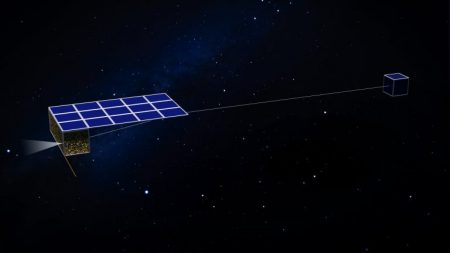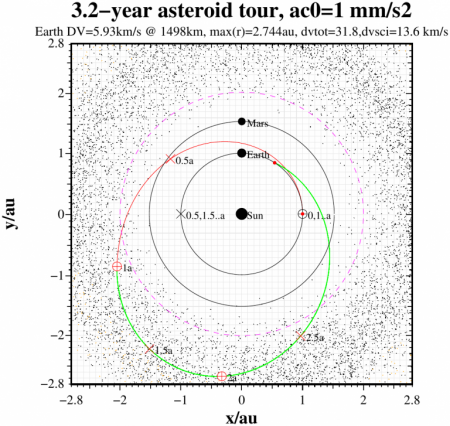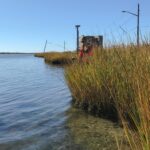October 20, 2017 – It appears this week that I am being consumed by outer space with this my third posting in a row focused on exploring the Solar System. Unlike the previous two, however, this blog describes a technology suitable for robotic spacecraft, not one attended by humans.
The proposal comes from Pekka Janhunen of the Finnish Meteorological Institute. Located in Helsinki, Finland, the Institute has proposed some pretty novel ideas over the last decade or so and at this year’s European Planetary Science Congress held in September presented a mission plan for a visit to more than 300 asteroids to be conducted over a three year period.

Called the Asteroid Touring Nanosat Fleet, Janhunen and his colleagues see the project as comprising 50 very small spacecraft launched into space where they would unveil an electric propulsion system that would be powered by the solar wind. Called the ESAIL, Janhunen first described it back in 2004 in the AIAA Journal of Propulsion and Power. Each would consist of 50 to 100, 25 microns (0.000787402 inches) thick and 20 kilometers (12 miles) long wires. Once outside Earth’s magnetic field, the spacecraft would launch its sail from an onboard motorized reel which would unwind it, spreading it out into a circle 40 kilometers (24 miles) in diameter. Powered by an onboard electron gun, the sail would create a positive charge by ejecting negatively charged ions away from the wires. To the outgoing solar wind, the wires wouldn’t appear 24 microns thick but rather seem 100-meters (330-feet) wide. The pressure exerted would translate over a year to speeds as fast as 30 kilometers (18 miles) per second. Theoretically, New Horizons, powered by such an ESAIL would have reached Pluto in less than 5 years rather than the 9 years it took. Missions to do more significant studies of Uranus and Neptune would be faster than and a fraction of current mission costs if ESAILs were deployed for propulsion.
But the Nanosat Fleet as proposed would be 50 spacecraft, each weighing approximately 5 kilograms (11 pounds) and propelled by a single ESAIL tether. The tether would generate acceleration at a rate of 1 millimeter per second to achieve sufficient acceleration to make a voyage through the Asteroid Belt in a quasi-elliptical orbit taking approximately 3.2 years before returning to the proximity of Earth.
Each Nanosat would target as many as 7 asteroids passing within 1,000 kilometers (620 miles), pointing its onboard instrumentation including a 4-centimeter (1.5-inch) telescope and infrared spectrometer at each target to map surfaces to a resolution of 100 meters and determine mineral content. The Nanosats would not be equipped with large antennas to beam the data they collect back to Earth. That’s why the planned orbits are elliptical allowing for the Asteroid Belt tour and a return to near-Earth space in a final flyby to transmit the collected data.

As proposed, Janhunen estimates the cost for the mission at 60 million Euros. He states, “The cost of a conventional, state-of-the-art mission to visit this number of asteroids could run into billions. This mission architecture….would reduce the cost to just a few hundred thousand Euros per asteroid. Yet the value of the science gathered would be immense.”
For companies like Planetary Resources and Deep Space Industries, with ambitions to mine the wealth of the Asteroid Belt, these types of reconnaissance missions would help in the selection process and would prove as well to be very economical. All that remains is for Janhunen and his colleagues to launch a demonstration flight and then wait for the telephone calls.















